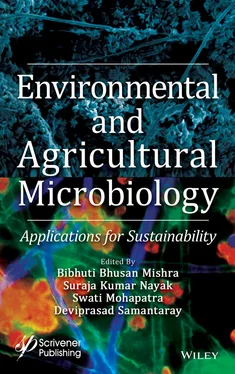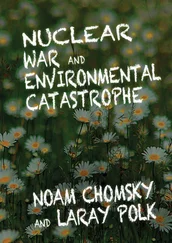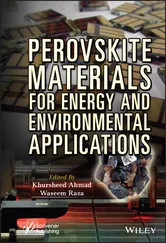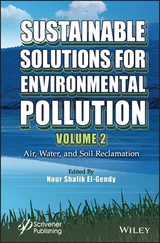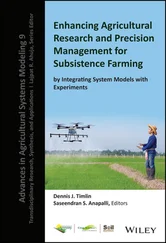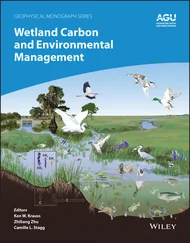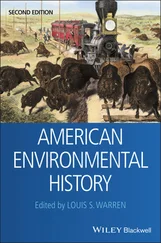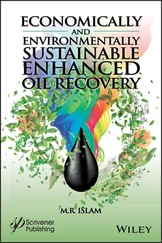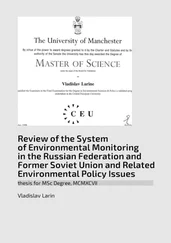1 Cover
2 Title page
3 Copyright
4 Preface
5 Part 1 MICROBIAL BIOREMEDIATION AND BIOPOLYMER TECHNOLOGY 1 A Recent Perspective on Bioremediation of Agrochemicals by Microalgae: Aspects and Strategies 1.1 Introduction 1.2 Pollution Due to Pesticides 1.3 Microalgal Species Involved in Bioremediation of Pesticides 1.4 Strategies for Phycoremediation of Pesticides 1.5 Molecular Aspects of Pesticide Biodegradation by Microalgae 1.6 Factor Affecting Phycoremediation of Pesticides 1.7 Benefit and Shortcomings of Phycoremediation 1.8 Conclusion and Future Prospects References 2 Microalgal Bioremediation of Toxic Hexavalent Chromium: A Review 2.1 Introduction 2.2 Effects of Hexavalent Chromium Toxicity 2.3 Chromium Bioremediation by Microalgae 2.4 Mechanism Involved in Hexavalent Chromium Reduction in Microalgae 2.5 Conclusion References 3 Biodetoxification of Heavy Metals Using Biofilm Bacteria 3.1 Introduction 3.2 Source and Toxicity of Heavy Metal Pollution 3.3 Biofilm Bacteria 3.4 Interaction of Metal and Biofilm Bacteria 3.5 Biodetoxification Mechanisms 3.6 Conclusion References 4 Microbial-Derived Polymers and Their Degradability Behavior for Future Prospects 4.1 Introduction 4.2 Polyamides 4.3 Polylactic Acid 4.4 Polyhydroxyalkanoates 4.5 Conclusion and Future Development References 5 A Review on PHAs: The Future Biopolymer 5.1 Introduction 5.2 Green Plastic: Biodegradable Polymer Used as Plastic 5.3 Difference Between Biopolymer and Bioplastic 5.4 Polyhydroxyalkanoates 5.5 Polyhydroxyalkanoates and Its Applications 5.6 Microorganisms Producing PHAs 5.7 Advantages 5.8 Conclusion and Future Prospective References 6 Polyhydroxybutyrate as an Eco-Friendly Alternative of Synthetic Plastics 6.1 Introduction 6.2 Bioplastics 6.4 Classification of Biodegradable Polymers 6.5 PHB-Producing Bacteria 6.6 Methods for Detecting PHB Granules 6.7 Biochemical Pathway for Synthesis of PHB 6.8 Production of PHB 6.9 Production of PHB Using Genetically Modified Organisms 6.10 Characterization of PHB 6.11 Various Biochemical Techniques Used for PHB Characterization 6.12 Biodegradation of PHB 6.13 Application Spectrum of PHB 6.14 Conclusion 6.15 Future Perspectives Acknowledgements References 7 Microbial Synthesis of Polyhydroxyalkanoates (PHAs) and Their Applications Abbreviations 7.1 Introduction 7.2 Conventional Plastics and Its Issues in Utility 7.3 Bioplastics 7.4 Fermentation for PHAs Production 7.5 Downstream Process for PHAs 7.6 Conclusions References 8 Polyhydroxyalkanoates for Sustainable Smart Packaging of Fruits 8.1 Introduction 8.2 Physiological Changes of Fresh Fruits During Ripening and Minimal Processing 8.3 Smart Packaging 8.4 Biodegradable Polymers for Fruit Packaging 8.5 Legal Aspects of Smart Packaging 8.6 Pros and Cons of Smart Packaging Using PHAs 8.7 Conclusion References 9 Biosurfactants Production and Their Commercial Importance Abbreviations 9.1 Introduction 9.2 Chemical Surfactant Compounds 9.3 Properties of Biosurfactant Compound 9.4 Production of Biosurfactant by Microbial Fermentation 9.5 Advantages, Microorganisms Involved, and Applications of Biosurfactants 9.6 Conclusions References
6 Part 2 MICROBES IN SUSTAINABLE AGRICULTURE AND BIOTECHNOLOGICAL APPLICATIONS 10 Functional Soil Microbes: An Approach Toward Sustainable Horticulture 10.1 Introduction 10.2 Rhizosphere Microbial Diversity 10.3 Plant Growth–Promoting Rhizobacteria 10.4 Conclusion and Future Perspectives References 11 Rhizosphere Microbiome: The Next-Generation Crop Improvement Strategy 11.1 Introduction 11.2 Rhizosphere Engineering 11.3 Omics Tools to Study Rhizosphere Metagenome 11.4 As Next-Generation Crop Improvement Strategy 11.5 Conclusion References 12 Methane Emission and Strategies for Mitigation in Livestock 12.1 Introduction 12.2 Contribution of Methane from Livestock 12.3 Methanogens 12.4 Methanogenesis: Methane Production 12.5 Strategies for Mitigation of Methane Emission 12.6 Conclusion References 13 Liquid Biofertilizers and Their Applications: An Overview 13.1 Introduction 13.2 Biofertilizers “Boon for Mankind” 13.3 Carrier-Based Biofertilizers 13.4 Sterilization of the Carrier 13.5 Merits of Using Liquid Biofertilizer Over Solid Carrier-Based Biofertilizer 13.6 Types of Liquid Biofertilizer 13.7 Production of Liquid Biofertilizers 13.8 Applications of Biofertilizers 13.9 Conclusion References 14 Extremozymes: Biocatalysts From Extremophilic Microorganisms and Their Relevance in Current Biotechnology 14.1 Introduction 14.2 Extremophiles: The Source of Novel Enzymes 14.3 The Potential Application of Extremozymes in Biotechnology 14.4 Conclusion and Future Perspectives References 15 Microbial Chitinases and Their Applications: An Overview 15.1 Introduction 15.2 Chitinases and Its Types 15.3 Sources of Microbial Chitinase 15.4 Genetics of Microbial Chitinase 15.5 Biotechnological Advances in Microbial Chitinase Production 15.6 Applications of Microbial Chitinases 15.7 Conclusion References 16 Lithobiontic Ecology: Stone Encrusting Microbes and their Environment 16.1 Introduction 16.2 Diversity of Lithobionts and Its Ecological Niche 16.3 Colonization Strategies of Lithobionts 16.4 Geography of Lithobbiontic Coatings 16.5 Impacts of Lithobiontic Coatings 16.6 Role of Lithobionts in Harsh Environments 16.7 Conclusion References 17 Microbial Intervention in Sustainable Production of Biofuels and Other Bioenergy Products 17.1 Introduction 17.2 Biomass 17.3 Biofuel 17.4 Other Bioenergy Products 17.5 Conclusion References 18 Role of Microbes and Microbial Consortium in Solid Waste Management 18.1 Introduction 18.2 Types of Solid Waste 18.3 Waste Management in India 18.4 Solid Waste Management 18.5 Solid Waste Management Techniques 18.6 Conclusion References
7 Index
8 End User License Agreement
1 Cover
2 Table of Contents
3 Title page
4 Copyright
5 Preface
6 Begin Reading
7 Index
8 End User License Agreement
1 Chapter 1 Figure 1.1 A diagrammatic representation of pesticide bioamplification in the en... Figure 1.2 A diagrammatic representation of fate of pesticide in the environment... Figure 1.3 Schematic representation diazinon degradation by Chlorella vulgaris [...
2 Chapter 2 Figure 2.1 The chromium cycle. Figure 2.2 Schematic diagram: Mechanism of Cr(VI) reduction through micro-algal ...
3 Chapter 3 Figure 3.1 Interaction of metal with EPs and binding on bacterial cell surface. Figure 3.2 Mechanism of biosorption. Figure 3.3 Mechanism of bioleaching. Figure 3.4 Mechanism of biovolatilization. Figure 3.5 Schematic diagram of bioimmobilization.
4 Chapter 4 Figure 4.1 Structures of polyamide with trade name NylonTM (Nylon-P, Q). Figure 4.2 Ring-opening polymerization of caprolactam. Figure 4.3 Itaconic acid-based heterocyclic polyamide. Figure 4.4 Overview of different manufacturing methods of lactic acid (a) chemic... Figure 4.5 (a) Conventional polymerization of polylactic acid, (b) High M w PLA p... Figure 4.6 Structure of polyhydroxyalkanoates (x = number of methylene groups in...
5 Chapter 5Figure 5.1 Environmental pollution: Contamination begins with us-and it ends wit...Figure 5.2 Different types of polymer available in our society.Figure 5.3 Structure and types of PHAs monomer.
6 Chapter 6Figure 6.1 Various properties of PHB.Figure 6.2 Different categories in which biodegradables polymers are classified.Figure 6.3 Various microorganisms producing PHB.Figure 6.4 Biosynthetic pathway for PHB production.Figure 6.5 Various cost effective substrates used for PHB production.Figure 6.6 (a) Structure of polyhydroxyalkanoates (PHAs). (b) Structure of poly-...Figure 6.7 Application potential of PHB.
7 Chapter 7Figure 7.1 General structure of Polyhydroxyalkanoate (PHA) shown in this figure ...Figure 7.2 Diagram of fermentation process for PHA production via microbial stra...Figure 7.3 Poly(3-hydroxybutyrate~ PHB) biosynthesis shown in R. eutropha for it...Figure 7.4 PHB biosynthesis shown in Pseudomonas species that represented the de...Figure 7.5 PHB in R. rubrum that utilized fatty acid biosynthesis pathway for fa...Figure 7.6 Estimated production capacity of bioplastics worldwide per annum.
Читать дальше
